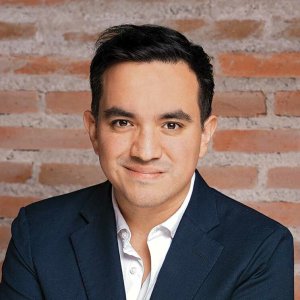Safety, Connectivity Go Hand in Hand

STORY INLINE POST
Q: How would you describe the level of Mexico’s connected infrastructure in comparison to the rest of the Americas?
A: Mexico is hungry for innovative technologies. As both private companies and public-sector customers are keen to adopt the latest solutions, Mexico has top-of-the-line technology implemented throughout the country and is a world leader in ATC systems. Thales’ strategy for the Americas includes providing total onboard connectivity through satellites. The company recently signed an agreement with satellite operator and manufacturer SES and broadband operator Hughes to provide telecommunications coverage over the Americas via satellite. This service should start operating by the end of 2018. The company also signed an agreement with SES for the construction of the new Ka band High-Throughput Satellite (Ka-HTS) that will be launched in 2020 to provide coverage to a large part of North America, South America, the Caribbean and the Atlantic. Once this system is operative, all flights from the US to South America will have total connectivity to Europe.
Q: What is Thales Alenia Space’s value proposition in its bid to build the support satellite for Morelos III?
A: That depends on the path the client wishes to follow. SCT is looking for a leasing agreement with an operator rather than a satellite manufacturer. Thales can provide whatever capacity SCT needs, but we need to partner with a satellite operator. We can work together with any satellite service provider to offer customers the right hardware to send into space. Thales is the number one payload manufacturer worldwide as it builds the satellites and their onboard electronics and also defines the bands in which the satellite will operate. Thales can meet any expectation for this L-band satellite by working together with the Mexican government’s operator of choice.
Q: Beyond its production of security and transportation systems, in which segments would Thales like to work?
A: Thales is interested in doing more in avionics, particularly products related to IFE systems. This is not a decision that has been made, though. Thales is developing software and installing urban security systems in Mexico. In the security industry, Thales together with its technological partner Telmex implemented one of the largest urban security systems in the world in Mexico City. We placed 15,000 cameras around the city and built the C5 command center and five smaller command centers called C2s. We created another two mobile C2s that are used at concerts and events. In this industry, Thales is looking to offer video analytics services in Mexico City. In the transportation sector, Thales provides tolling systems for CAPUFE and concessionaires that operate highways and tolling systems, ticketing systems for several Metrobús lines and signaling and communication systems for the Mexico City-Toluca interurban train.
Q: What role will the acquisitions of Guavus and Vormetric play in Thales’ long-term strategy?
A: The acquisition of Guavus is mostly related to Big Data, data mining and artificial-intelligence solutions. The more systems evolve, the more sensory information needs to be integrated to manage this input. Finding the relevant information that needs to be presented to the user through the exploitation and exploration of data has become an increasingly complex challenge. The acquisition of Guavus is important for us to overcome this challenge.
Q: How is Thales planning to further contribute to NAICM’s development?
A: Thales wants to maintain its position as ATC systems supplier to NAICM authorities. We have started working on a value proposition for NAICM regarding the airport’s security perimeter, its operational control centers, internal communications systems and anything related to the communications systems inside NAICM’s terminal. Thales wants to take part in any future train and bus line projects that go to and from the airport. There are manyopportunitiesforthecompanytotakepartinthe development of NAICM. This constitutes a key priority for the company as the call for tenders will come out at the end of 2017 and the beginning of 2018.























